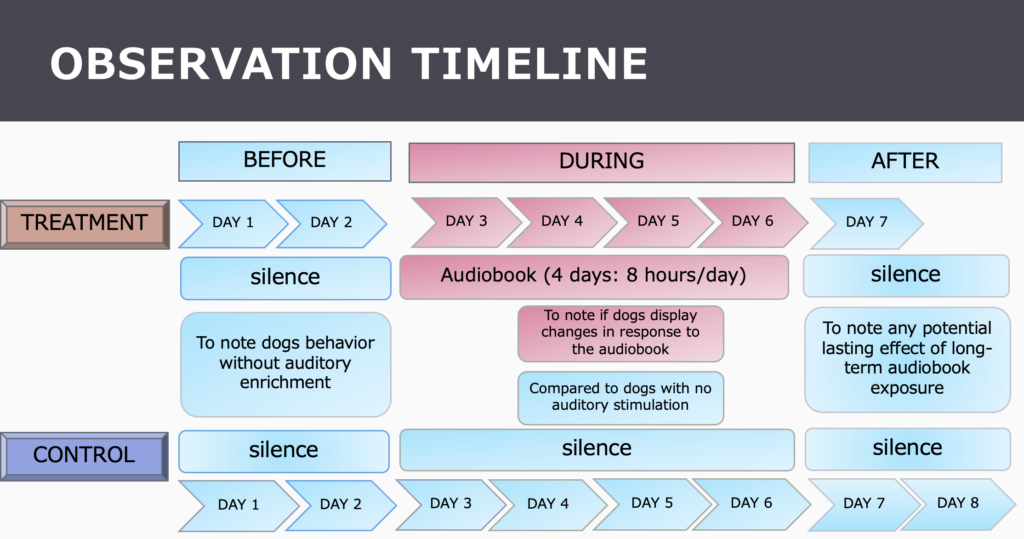This study took place at Hundstallet in Stockholm, Sweden. The observations occurred twice: The first batch was observed in late September and the second batch was observed in late October.
For each batch, a new set of dogs were used, resulting in a total of 25 dogs. The treatment group had 14 dogs (8 ♀ and 6 ♂) while the control group had 11 dogs (3 ♀ and 8 ♂).
The control and treatment groups were housed in two separate corridors, and dogs were placed in individual kennels. An audiobook was playing from two speakers placed in the treatment corridor (for 4 days in a row, 8 hours a day).
The following timeline was used to observe the dogs’ behavior

The following behaviors were observed:
The following behaviors were used:
- Moving (moving in any direction, jumping, bouncing, etc)
- Standing
- Lying down
- Sitting
- Barking
- Whining
- Out of view (time that the dogs spent in their outdoor kennels)
For each day, each dog was allocated 15 minutes in the morning and 15 minutes in the afternoon during which the occurrence of each behavior was measured either as the duration (total occurrence in seconds) or the number of occurrences.
The behaviors occurring during the first two days were grouped into “before“, while the treatment period was named “during“, and the two days after were named “after“. General Linear Mixed Model was used to find any significant interactions between time (before, during or after) and a specific behavior. To learn more about this, please check my results page!